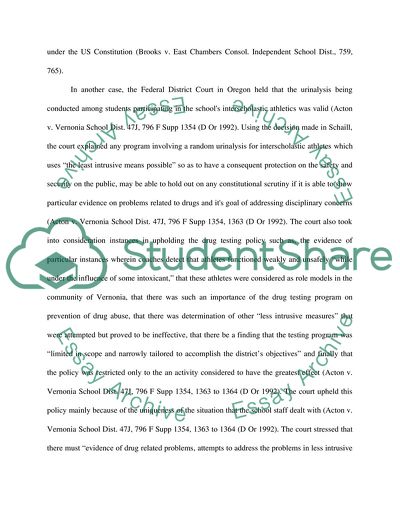Cite this document
(Administrative Rights and Responsibilities of High Schools Dissertation, n.d.)
Administrative Rights and Responsibilities of High Schools Dissertation. Retrieved from https://studentshare.org/education/1724990-policies-and-procedures-for-drug-testing-high-school-students-compared-to-college-students-for-the-permission-to-participate-in-extracurricular-and-sports-activities
Administrative Rights and Responsibilities of High Schools Dissertation. Retrieved from https://studentshare.org/education/1724990-policies-and-procedures-for-drug-testing-high-school-students-compared-to-college-students-for-the-permission-to-participate-in-extracurricular-and-sports-activities
(Administrative Rights and Responsibilities of High Schools Dissertation)
Administrative Rights and Responsibilities of High Schools Dissertation. https://studentshare.org/education/1724990-policies-and-procedures-for-drug-testing-high-school-students-compared-to-college-students-for-the-permission-to-participate-in-extracurricular-and-sports-activities.
Administrative Rights and Responsibilities of High Schools Dissertation. https://studentshare.org/education/1724990-policies-and-procedures-for-drug-testing-high-school-students-compared-to-college-students-for-the-permission-to-participate-in-extracurricular-and-sports-activities.
“Administrative Rights and Responsibilities of High Schools Dissertation”, n.d. https://studentshare.org/education/1724990-policies-and-procedures-for-drug-testing-high-school-students-compared-to-college-students-for-the-permission-to-participate-in-extracurricular-and-sports-activities.


